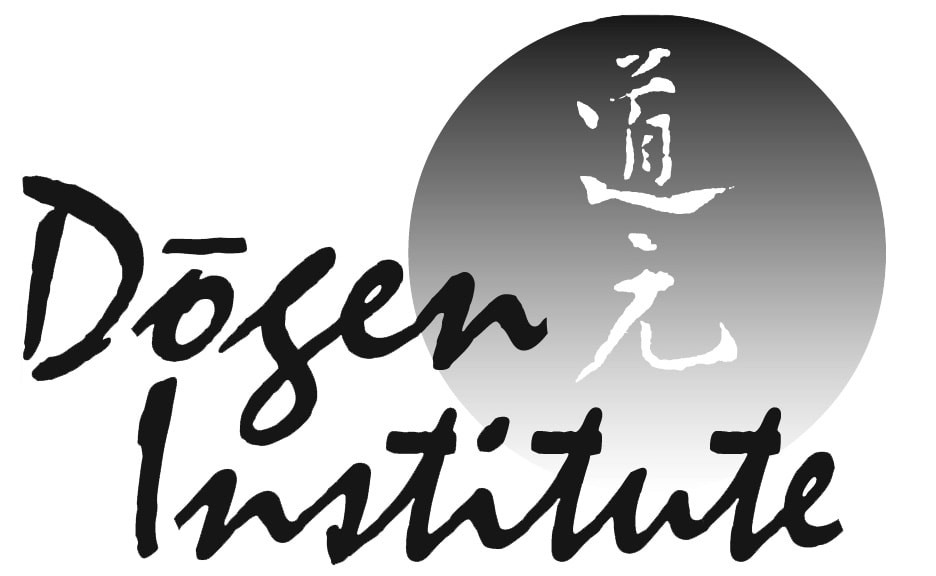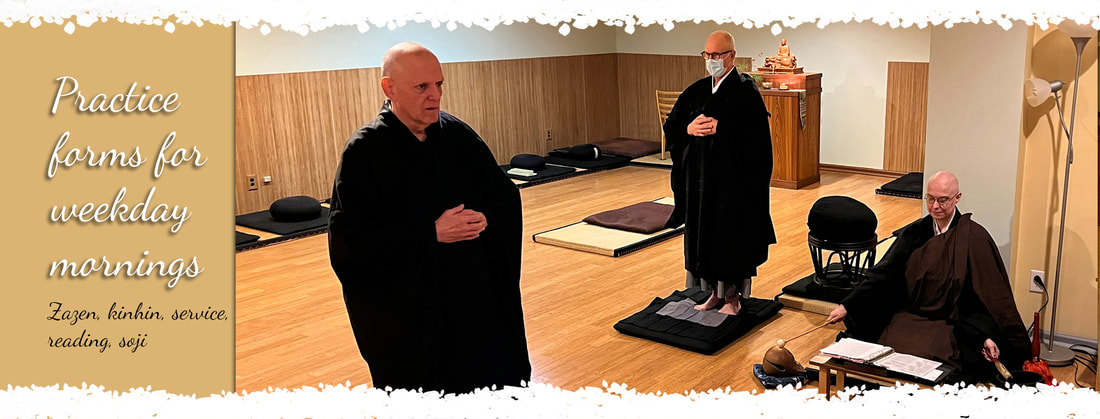This page tells you about the forms we follow here during weekday morning zazen, kinhin, transition to the morning service and the service itself. The forms themselves are not as important as the opportunity they give us to put aside self-involvement and pay attention to our actions in and around the zendo. Please ask questions about things you don’t understand so that you feel comfortable practicing here. Do your best to follow along with what’s happening, but don’t worry about making a mistake. All practitioners were once beginners too.
Zazen |
Transition to chanting service |
Morning bows and greeting
Kinhin
|
Morning service
Following the service
Here's a printable version of this information as a trifold brochure.
| ||||||





